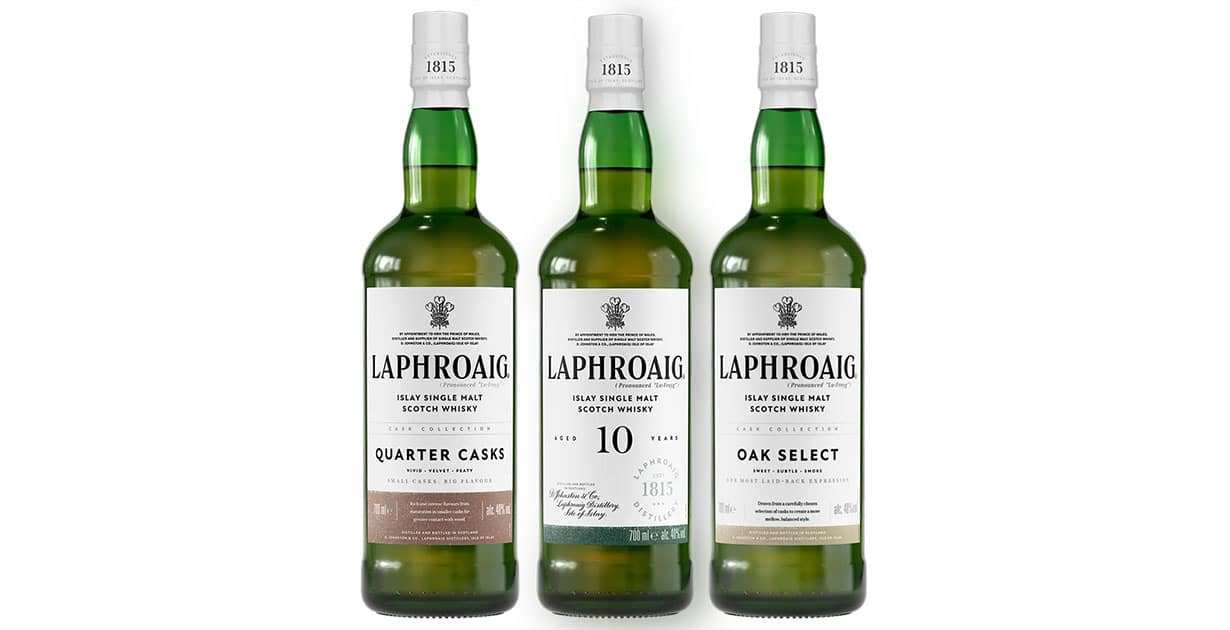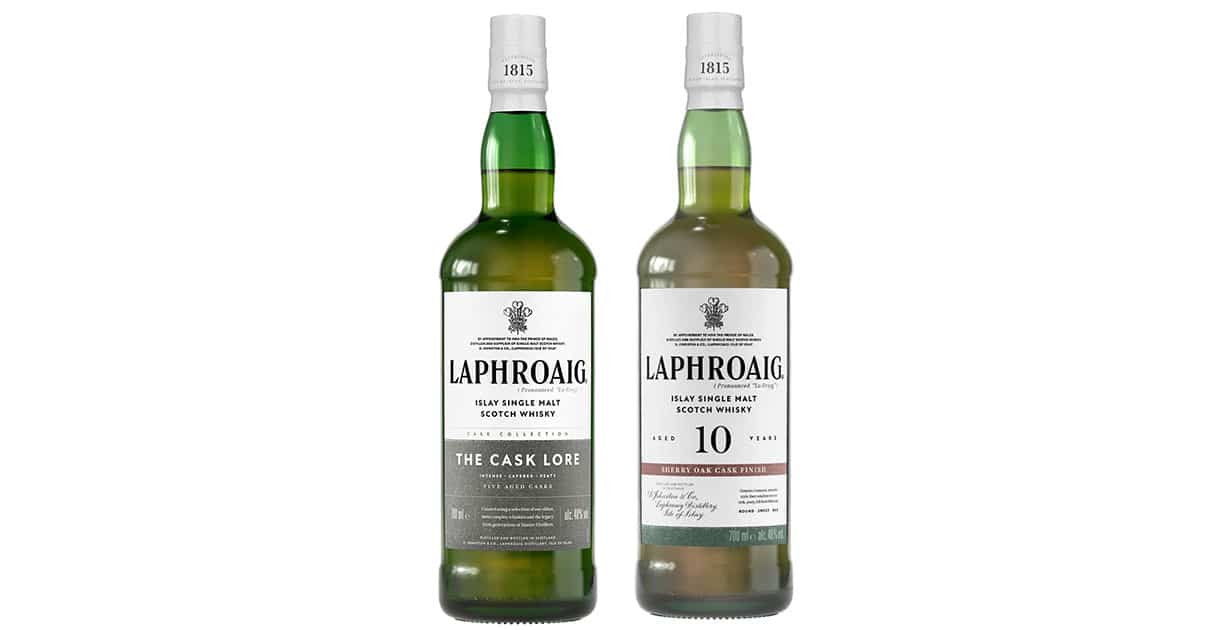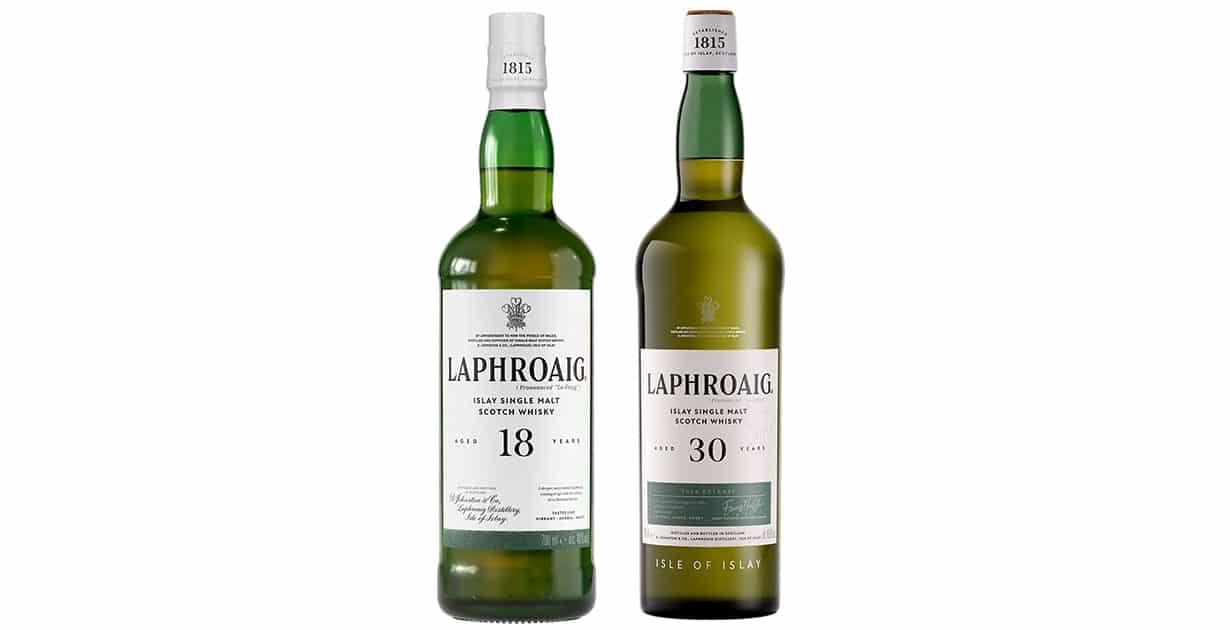![]()
Laphroaig Tasting Guide: Few whiskies divide opinion quite like Laphroaig. Bold, smoky, and unapologetically medicinal, it’s a dram that either becomes a lifelong obsession—or a one-time curiosity. But for those intrigued by its reputation and ready to explore Islay’s wild south coast through their glass, Laphroaig offers far more than just a blast of peat.
This guide is your roadmap through the distillery’s core and collector expressions—from gentler introductions to the deep complexity of age and wood influence. Whether you’re peat-curious or already a fan of smoky malts, you’ll discover how Laphroaig’s flavors evolve across time, cask, and intensity. Let’s take the journey together.
What Makes Laphroaig Iconic?
Founded in 1815 on Islay’s rugged south coast, Laphroaig has remained stubbornly faithful to its distinctive style for over 200 years. The distillery even earned a Royal Warrant from Prince Charles (now King Charles III) in 1994, becoming the only Scotch whisky to hold this royal endorsement.
Three characteristics define Laphroaig’s instantly recognisable profile: a medicinal, iodine-like quality often compared to antiseptic; intense phenolic peat smoke from Islay’s unique bogs; and an unmistakable maritime influence – briny and seaweed-rich – from its Atlantic shore location. These distinctive qualities emerge from traditional production methods, including on-site floor malting with peat fires “facing out to sea” and maturation in coastal warehouses where ocean mists and salt air shape the spirit’s character.
For many, Laphroaig represents a whisky rite of passage, challenging the palate and defying neutrality.
The Peated Whisky Journey – A Roadmap
Navigating Laphroaig Tasting Guide: Laphroaig’s range requires understanding how each expression builds on the distillery’s distinctive character. This guide arranges them by flavor intensity and complexity, creating a natural progression for exploring Islay’s famous medicinal malts.
Core Expressions – Where to Begin

Laphroaig Oak Select
Price: From $40
Let’s begin with the gentlest introduction to Laphroaig: Laphroaig Oak Select. As you lift the glass, notice how the peat is present but softened, allowing the sweeter notes to come forward — marzipan, a touch of fruit, even a hint of vanilla from the various cask types (Oloroso sherry, PX, bourbon, American oak). Some call this “Laphroaig Lite” — and it’s easy to see why. It carries the distillery’s DNA but with its rougher edges smoothed out. Perfect for curious newcomers easing into the world of peated whisky.
Laphroaig Quarter Cask
Price: From $47
Next, let’s move to something a little bolder. Quarter Cask builds on that smoke but tempers Laphroaig’s famously medicinal character. After maturing in bourbon barrels, the whisky is finished in quarter-sized casks, intensifying the interaction with the wood. As you sip, you’ll find a lovely balance — the peat is richer, but it’s interwoven with creamy vanilla and a welcome sweetness. The higher ABV and non-chill filtration give it more weight on the palate. A fantastic gateway for those who want smoke and depth without being overwhelmed.
Laphroaig 10 Year Old
Price: From $42
Now we come to the heart of Laphroaig. The classic 10 Year Old. Take your time with this one — the nose alone will introduce you to everything that defines the distillery: dense peat smoke, briny seaweed, that unmistakable iodine. But notice, too, the surprising sweetness at the start of the palate, before the tidal wave of smoke and salt arrives. It’s a whisky that divides opinion sharply, but if you want to understand Laphroaig in its purest form, this is the benchmark.
The Next Step – Flavor Explorations

Laphroaig 10 Year Old Sherry Oak Finish
Price: From $68
If you’re ready to explore how Laphroaig’s character can evolve, the 10 Year Old Sherry Oak Finish is a fascinating next step. Start by noticing how the peat and medicinal notes are still there, but now they’re softened by layers of honey, dark chocolate, and warming spice from the Oloroso sherry casks. The higher ABV adds extra body, and the non-chill filtration keeps the mouthfeel rich. It’s a beautiful demonstration of how wood influence can reshape a familiar whisky.
Laphroaig The Cask Lore
Price: From $80
From there, we move to Lore — a whisky that showcases the full spectrum of Laphroaig’s experience. A blend of whiskies aged between 7 and 21 years, drawn from a range of cask types, Lore is layered and complex. Take a deep breath: the nose brings smoke, sea spray, minerals, and chocolate. On the palate, look for spice, oily richness, and subtle sweetness. It’s an intricate whisky, meant for slower, contemplative sipping — and a rewarding way to appreciate the depth of Laphroaig’s craft.
The Pinnacle – Age and Refinement

Laphroaig 18 Year Old
Price: From $218
Now let’s slow down and see what time can do. After nearly two decades in bourbon barrels, Laphroaig’s fierce character mellows into something beautifully balanced. The smoke is softer, the peat woven gently among notes of vanilla, baked apples, and cinnamon. The palate is silky but never dull, and the finish lingers with refined fruit and herbal notes. It’s a striking example of how age can tame intensity without losing identity.
Laphroaig 30 Year Old
Price: From $680
Finally, the ultimate expression: Laphroaig 30 Year Old. With three decades of maturation, the once-aggressive peat now plays a subtle supporting role behind a symphony of citrus, tropical fruit, and polished oak. The medicinal qualities that once defined it have melted into the background, creating a whisky of remarkable complexity and grace. It’s rare, expensive, and utterly transformative. A fitting pinnacle for anyone who wants to see where the Laphroaig journey can ultimately lead.
How to Taste Peated Whisky
Heavily peated whiskies like Laphroaig require specific tasting techniques to fully appreciate their complex character. So here are a few tips to get you started:
Glassware: Use a tulip-shaped glass (Glencairn or copita) to concentrate aromas while giving phenolic compounds room to develop.
Give it time: Allow 5-10 minutes after pouring before tasting to let the whisky breathe.
Gentle nosing: Take short, shallow sniffs rather than deep inhalations. Keep your mouth slightly open while nosing to reduce the alcohol sting and better detect subtler aromas beneath the smoke.
Experiment with water: Try it neat first, then add a few drops of water to higher-strength expressions. This often “opens up” peated whiskies, revealing sweetness previously masked by smoke.
Multiple tastes: Your perception changes between first and subsequent sips as your palate adjusts to the phenols. Take small sips and allow time to adapt before making judgments.
A Journey Worth Taking
Laphroaig’s iconic range offers a fascinating progression from approachable introductions to complex, mature expressions, each showcasing different facets of the distillery’s distinctive character while maintaining that unmistakable medicinal DNA.
Which Laphroaig holds a special place in your collection? Have you discovered a perfect entry point for peated whisky newcomers? Share your experiences in the comments – your fellow whisky enthusiasts might just discover their next favorite dram in the comments.
Read the full article at Which Laphroaig Is Right for You? A Guide To Its Most Popular Bottles
